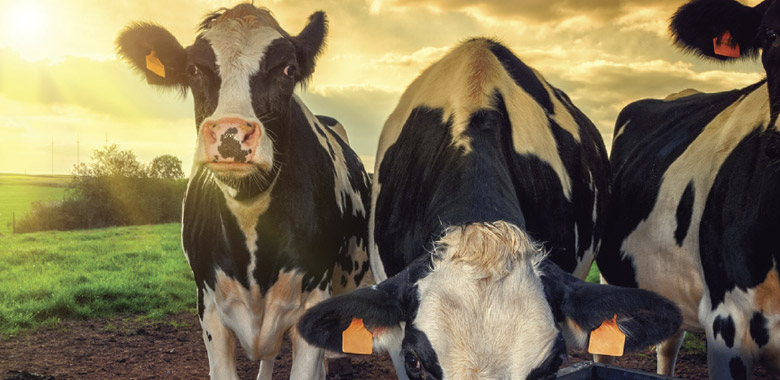I will start by quoting a dairy farmer whom I met early in my career, “it’s all about energy!” He was referring to his experience when working to get the best results from his herd. I have come to understand that he is right on so many levels. Recently I attended the 2015 Herd Health and Nutrition Conference, put on by New York’s Pro-Dairy and Northeast Agribusiness and Feed Alliance. This was the first time I was able to hear Dr. Mike Allen discuss the digestion of starch and how it relates to our dairy cattle. I am very familiar with Dr. Allen’s work and have quoted and implemented his findings often.
The molecules of starch are held together by an amino acid. How tightly bonded the starch molecules are has a major impact on how fermentable it is in the rumen. This is described as being vitreous or floury. The more vitreous the starch, the harder it is, and less fermentable it will be in the rumen. Processing or fermenting starch will increase its fermentability. This is what we are after when considering new crop corn silage being ready to feed out. We are looking for the starch to be far enough along in the fermentation process that it solubilizes the starch, breaking apart the protein bonds between the starch molecules, so that the enzyme amylase can start to digest it when it is fed.
At Phoenix Feeds, we have teamed up with Akey, who has provided us with their software to balance rations. They developed a unique program that models the cow’s performance. To go along with this, they developed a reference guide that helps to predict at which stage of fermentability the fermenting starch is. They have taken into account the degree of processing and moisture level, as these have a great deal of influence on how the cow will respond. With this data input into the software, we can more accurately balance rations for different time periods, processing, and moisture. This has a great effect on milk production and butterfat output.

There is a fascinating biological function that starch has on the lactating dairy cow. The way the starch is presented to the cow (i.e., how ruminally fermentable it is) plays an important role in how it is expressed. The early lactation cow thrives off highly fermentable starch in large amounts. Dr. Allen showed in his research that high-producing cows (90+ lbs) responded better with more starch coming from high moisture corn versus ground corn than did later lactation cows (actually a negative response in later lactation). There is a depression in dry matter intake with highly fermentable starch, in mid- to late-lactation cows. This is a function of the interaction of insulin on the appetite. Insulin is also responsible for the increase in body weight gain made of fat, in later lactation.
The fresh cow (0–21 days) has a large need for glucose. Cornell research (T. Overton, et al.) has shown that higher starch diets in the fresh cow allow for more milk production and less sub-clinical and clinical ketosis. The source of that glucose has been best shown to be coming from dry ground corn rather than a faster fermenting source. Dr. Allen suggests that the dry ground corn will provide an ample amount of energy to be produced without the negative feedback loop that insulin would provide if a fast, ruminally-fermentable source is used. This feedback loop of insulin is the same process I like to adjust for in maintenance groups and later lactating groups. By feeding less fermentable carbohydrates and non-forage fiber during late lactation, I am able to maintain good consistent milk production, high levels of butterfat, and keep the cows from becoming over-conditioned.
I believe that understanding starch digestion can offer us a lot more in terms of performance out of the dairy cow. More specifically, a better understanding of the responses to insulin and glucose will allow for improved results. We are just starting to grasp what starch is doing metabolically within the cow. When considering that 20–30% of what we feed lactating dairy cattle is starch, more precise ration balancing is essential.

